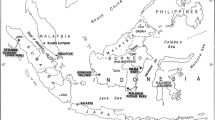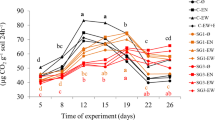Abstract.
The collembolan species Heteromurus nitidus, exclusively located in soils at pH>5, can be cultured in acidic humus. As this species is attracted to the excreta of earthworms from calcic mull, its distribution is supposed to be determined only indirectly by soil pH through the distribution of earthworms. Higher densities and biomasses of Lumbricidae were observed in a calcic mull (pH 7.8) than in an acidic mull (pH 4.8) and a moder humus (pH 4.2). Choice experiments were performed to compare the attraction of H. nitidus to the mucus-urine mix of five earthworm species from the calcic mull and the acidic mull. H. nitidus was attracted to the excreta of the five species, whatever their ecological category and the humus form from which they originated. The collembolan Heteromurus major, which was indifferent to soil pH, was not attracted to earthworm excreta, which emphasizes the significance of this phenomenon for the distribution of H. nitidus over a pH range. The attraction of H. nitidus to earthworm excreta tended to be weaker and more variable when earthworms originated from acidic mull compared to calcic mull, particularly in the case of Lumbricus terrestris. Increased earthworm density reinforced by better mucus quality and quantity could determine the distribution of H. nitidus according to soil acidity. The only urine compound capable of attracting H. nitidus was NH3 at a low concentration (0.03 g l–1). The NH3 content of the mucus-urine mix which attracted H. nitidus was 0.037 g l–1, and was therefore responsible, at least partly, for the attraction.
Similar content being viewed by others
Author information
Authors and Affiliations
Additional information
Electronic Publication
Rights and permissions
About this article
Cite this article
Salmon, S. Earthworm excreta (mucus and urine) affect the distribution of springtails in forest soils. Biol Fertil Soils 34, 304–310 (2001). https://doi.org/10.1007/s003740100407
Received:
Issue Date:
DOI: https://doi.org/10.1007/s003740100407




